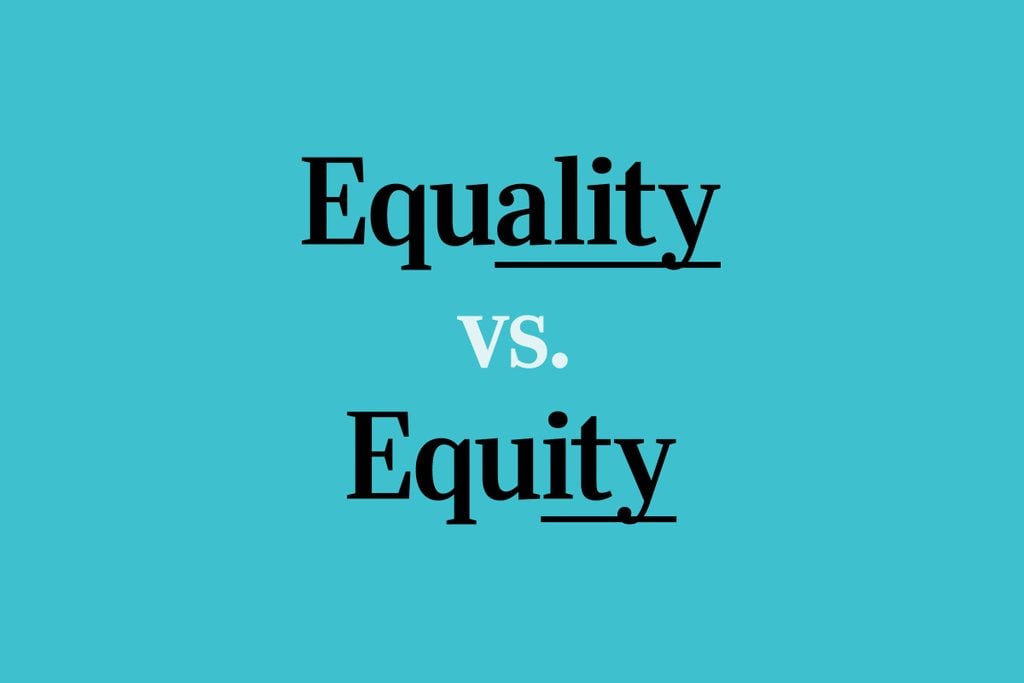Equality vs. Equity: What’s the Difference?
Updated: Nov. 04, 2022

Maybe you've interchanged the words "equity" and "equality" in conversation—but they don't, in fact, mean the same thing.
At best, using the wrong word can be embarrassing. At worst, you change the meaning of your sentence completely. Last year, many people searched for the difference between systematic and systemic. If “equity” and “equality” confuse you too, you’re not alone. These are only a couple of common words and phrases that many people use wrong.
An equal foundation
Before defining “equity” and “equality,” let’s look at their common root word: “equal.” According to Dictionary.com, “equal” was first recorded in 1350–1400. It comes from the Latin words “aequālis” (meaning “equal, like”) and “aequ(us)” (meaning “even, plain, just”). Many frequently confused words have similar roots, like past and passed or who and whom.
Calling two or more objects equal simply means that they’re alike in value or quantity. For instance, if you and your friend split a pizza into equal halves, you both get to eat the same amount.
What does equality mean?
The noun “equality” dates back to the Middle English period: the years 1350-1400.
Dictionary.com defines “equality” as “the state or quality of being equal.” Simple enough, right? It’s important to note that the dictionary doesn’t mention fairness here.
Let’s say, for example, that a toddler and a teenager want a cookie from the jar on the counter. Offering them both a 6-inch step stool is an example of equality. They receive the same treatment, regardless of their differences.
What does equity mean?
The word “equity” first appeared in the 1300s. It looks and sounds like “equality,” but the term is much more nuanced. According to Merriam-Webster.com, “Equity is often related to justice or proportional fairness.” Dictionary.com defines it as “the quality of being fair or impartial.”
So, what does equity look like in the situation above? The teenager is probably tall enough to reach the cookie jar without help, so you could offer only the toddler a stool. That seems like an equitable solution. But sometimes it’s not. What if the teenager is in a wheelchair? Or what if the teenager is locked out of the house? Equity depends on the situation.
What’s the difference between equality and equity?
“Equality” and “equity” have the same root, but there’s a significant difference in meanings. Equality involves everyone receiving exactly the same treatment, whereas equity requires fair treatment according to each person’s needs and situation.
An example: A 4-ft. tall person and a 6-ft. tall person both want to peer over a 5-ft. fence.
Offering each person a stepladder is an example of equality. Offering the shorter person a stepladder is an example of equity.
Another example: A global pandemic suddenly forces schools to switch to e-learning. Distributing laptops to every student, regardless of whether they own them already, is an example of equality. Distributing laptops to only the students without personal devices (and perhaps using the extra funds to offer them wireless Internet access) is an example of equity.
The difference between equity and quality boils down to fairness. Equality is the equal distribution of resources regardless of the situation. Equity goes a step further by focusing on what people need to achieve the fairest outcome for all. Next, find out the 20 synonyms and antonyms people search for the most.
Sources:
- Dictionary.com: Equal
- Dictionary.com: Equality
- Dictionary.com: Equity
